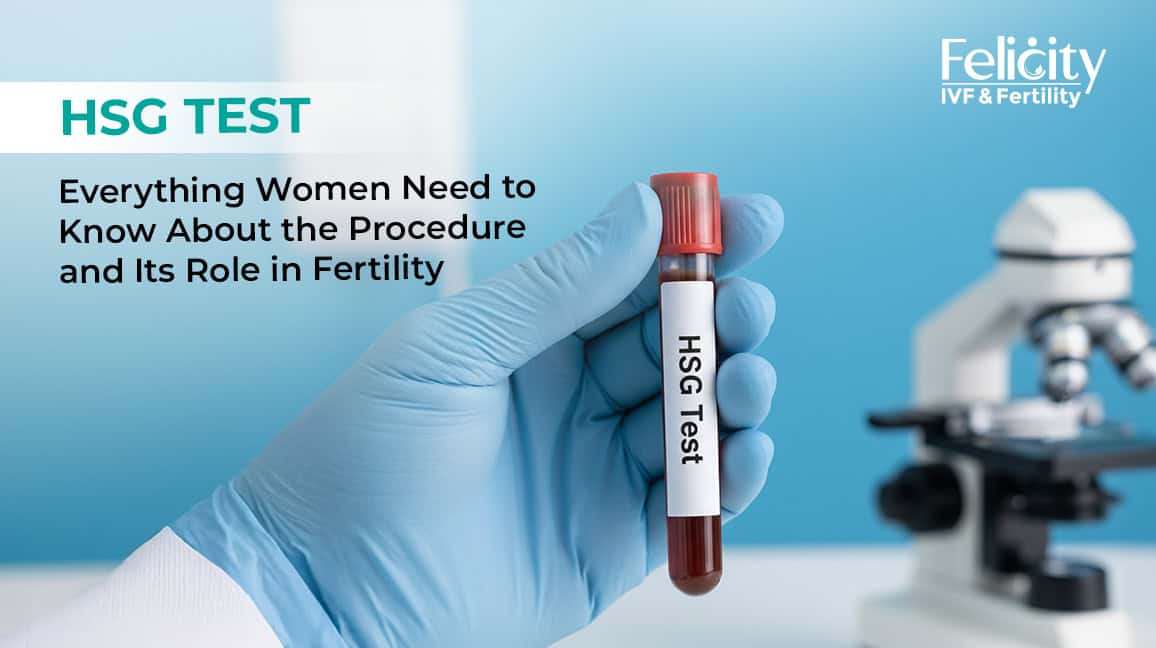HSG Test: Everything Women Need to Know About the Procedure and Its Role in Fertility

The struggle towards becoming a parent is normally met with difficulties that, in turn, demand a good knowledge of the existing diagnostic tools. An important process in this process is the hysterosalpingography, or the HSG test. To a woman who is going to receive a fertility assessment, the role and performance of the HSG test in Hyderabad is a crucial process. The special X-ray that is used specifically to check the state of the female reproductive system, on the uterus and fallopian tubes, is the specialised X-ray HSG test in Hyderabad. The test is needed to determine the fertility status and possible physical obstacles to natural conception.
What is an HSG Test?
The hysterosalpingography (HSG) is a diagnostic test that is performed with the help of X-rays, which visualises the inner structure of the uterine cavity and the fallopian tubes. This is done by inserting a contrast dye via the cervix. The movement of the dye with the passage through the uterus to the fallopian tubes is observed through a process known as fluoroscopy (a continuous X-ray beam). The key intention of the HSG test in patients is to either confirm the normal shape of the uterine contour or, most importantly, to confirm the opening and/or obstruction of the fallopian tubes. The tubal patency is one of the significant determinants of successful conception.
How is an HSG Test Done?
The patient is usually admitted to undergo the HSG test procedure, which lasts around 30 minutes and is performed on an outpatient basis. It is usually planned during the first half of the menstrual period, once menstruation is finished but before ovulation occurs, to ensure an early pregnancy is not disrupted. The HSG test process entails many essential steps:
- Preparation: Sometimes patients are told to take a painkiller about an hour before the operation to reduce possible pain, which some women refer to as the equivalent of mild cramps during a menstrual period.
- Procedure: The patient is placed under the X-ray camera. The speculum is inserted into the cervix, the inside of the cervix is cleansed, and a very thin catheter is slipped into the cervix.
- Dye Injection: The contrast dye is gradually inserted through the catheter. When the dye enters the tubes and uterus, a series of images is taken by the radiologist.
- Monitoring: A check in the travelled dye assists in identifying a block or a structural addition in the tubes and the reproductive cavity.
What the HSG Test Detects
As a basic design, the HSG test procedure is intended to diagnose any physical anomalies that may lead to an abortion or implantation failure. The HSG test detects a combination of two major categories:
- Tubal Blockages: The first thing that has to be identified is whether there are blockages in the fallopian tubes. They are prevented by blockages, which may have been preceded by infection or endometriosis, by the blockage of the path to the egg and by the sperm to the endometrially fertilised egg in the uterus. The site of the obstruction (proximal or distal) can assist in determining the next course of therapy.
- Uterine Anomalies: The test gives clear pictorial imaging of the uterine shape, enabling physicians to assess whether the uterine corpus is infected with potential issues such as fibroids, polyps, or adhesions (as in Asherman syndrome). It is also able to determine congenital anomalies in the uterus, which can be harmful to pregnancy.
Why Recommend an HSG Test in Fertility Assessment?
This is crucial to an understanding of what the HSG test is and the result of the test in the diagnosis of infertility in women. When an HSG might be recommended is usually after some unsuccessful attempts at natural conception.
- Infertility Work-up: This is a routine aspect of the initial investigation of those couples who have been trying for months or years to be pregnant with no success.
- Recurrent Miscarriage: It might be suggested to examine the uterine cavity for structural concerns that might help in the prevalence of pregnancy loss.
- Pre-Surgical Planning: It is applied when procedures such as tubal ligation or myomectomy are carried out to assess the situation within the reproductive tract and identify the possible outcome.
For people who are mature enough to need clarity, an HSG test in Hyderabad gives vital information that guides further steps of fertility intervention.
How Does the Test Work?
The scientific concept of how this instrument operates is based on the contrast between fluid imaging and X-ray imaging. The liquid that has been injected is radiopaque and thus appears on X-ray film. In case the patient has patent tubes (open tubes), the dye will come out of the uterus, through the tubes, and leak into the abdominal cavity, proving the clearance of the tube. Just when blocked, the dye will be held, and the tube will be distended, or there will be no spillage of dye. This visual confirmation is very effective when it is done using a simple visual check to examine tubes. The process gives direct and instantaneous information about the reproductive system of the woman, chemically, an aspect that significantly influences the overall female fertility.
What are the Benefits of an HSG Test?
The HSG test has multi-dimensional benefits, as it has both diagnostic and potential curative importance. The primary benefit is the definitive diagnosis of tubal patency and uterine health, which helps to determine the cause of infertility accurately.
- Treatment Guidance: The outcome determines which type of treatment to intervene with, either asking the physician to repair the tube (when a blockage is detected) or referring directly to the procedures (such as IVF) that do not involve the fallopian tubes.
- Potential Therapeutic Flush: The dye itself, in some instances, may have a flushing effect, which might remove small mucus plugs or cell debris in the fallopian tubes. Certain statistics indicate that there is a minor and short-lived improvement in the conception rates during the months directly after the procedure.
- Cost-Effectiveness: It is usually a fast, safe, and cost-efficient way of acquiring necessary anatomical knowledge before establishing more invasive diagnostic surgeries.
What to Expect Post-Procedure?
Any anxiety can be alleviated by knowing what you are dealing with once you are through. Another common post-procedure side effect is mild abdominal cramping that can mimic menstrual cramps and wanes away.
- Discharge: Low levels of vaginal spotting or a watery discharge (because of the dye) are normal, and sanitary protection is advisable.
- Recovery: The majority of women can resume normal functions at once. When the cramping is unnoticed or in case of fever, excessive haemorrhage, or abdominal pain, it is necessary to submit to medical care urgently, where indications of some rare complication might appear.
- Results: The radiologist interprets the images, and the fertility expert would explain the results, specifying the additional measures to follow, depending on the integrity of the fallopian tubes and uterus that appear during the course of the HSG examination in Hyderabad.
Risks and Considerations
Although the HSG test for female patients is generally safe, similar to any other treatment, HSG comes with certain risks and minor complications.
- Infection: Pelvic infection is most common but low-risk. The women who faced a high chance of this risk had developed a history of pelvic inflammatory disease. Mitigation to prevent this is achieved by the use of prophylactic antibiotics.
- Allergic Reaction: This is a rare reaction to the contrast dye. Allergy, especially to iodine or shells, is screened off in the patients beforehand.
- Discomfort: Although not a risk, pain associated with dye injection may happen, although mostly it is temporary, and it can be managed through pre-procedure medication.
For anyone undergoing fertility assessment, the HSG Test in Hyderabad remains a cornerstone diagnostic tool.
Felicity IVF: The Best IVF Clinic in Hyderabad
Knowing the procedure of the HSG test and what to expect regarding the preparation of the HSG test process is a necessary component of gaining control over the fertility process. The information obtained from this test plays a key role in creating the right diagnosis and a treatment plan for behaviour. The issues diagnosed concerning tubal patency and uterine health directly inform the specialist of the next step, which may include further investigation to confirm or may go to an assisted reproductive procedure through the results of the HSG test. In case you need an HSG test in Hyderabad or you need specific advice regarding your fertility issues, we, at Felicity IVF and Fertility Clinic, are committed to offering high-quality and high-standard services throughout all phases of your process.
Disclaimer: This article’s content is for informational purposes only and is not a substitute for professional medical advice. Always consult a qualified healthcare provider or fertility specialist before making decisions regarding HSG tests or fertility treatments like IUI and IVF, in compliance with Indian healthcare regulations.




